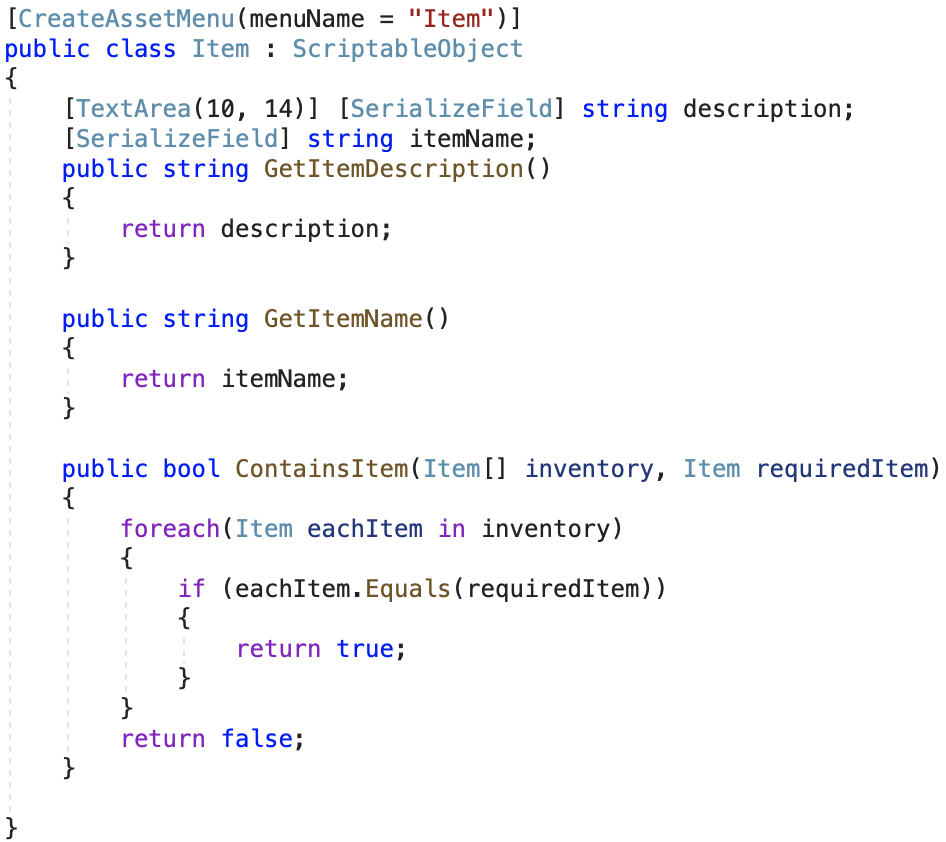Hey everyone!
I found it super awesome that people here are really supportive to new game developers. I have a small question about creating new Contain methods for data structures other than primitive data types. I'll try my best to explain what I mean, I've created a Scriptable Object called Item that I want to add to my game. The new method I wanted to incorporate was ContainsItem to check if my inventory contains a specific Item. 
I was hoping to call ContainsItem to an array of Items, Item[], but it gives me this error.
How do I resolve an issue like this? Thanks in advanced!

